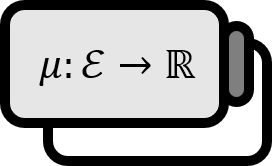Hardy-Littlewood Maximal Function
Definition1
Let’s denote $ f \in L^1_{\mathrm{loc}}$. Then, the Hardy-Littlewood maximal function $Hf$ is defined as follows:
$$ Hf (x) := \sup \limits_{r>0} A_{r} |f|(x) = \sup \limits_{r>0} \frac{1}{\mu \big( B(r,x) \big)}\int_{B(r,x)}|f(y)|dy $$
$A_{r}f(x)$ represents the average of the function values of $B_{r}(x)$ on the top of $f$. $H$ is called the maximal operator.
Theorem
- $Hf$ is a Lebesgue measurable function.
- If $f \in L^1_{\mathrm{loc}}$, then $A_{r}f(x)$ is continuous with respect to both $r>0$ and $x \in \mathbb{R}^n$.
Gerald B. Folland, Real Analysis: Modern Techniques and Their Applications (2nd Edition, 1999), p96 ↩︎
